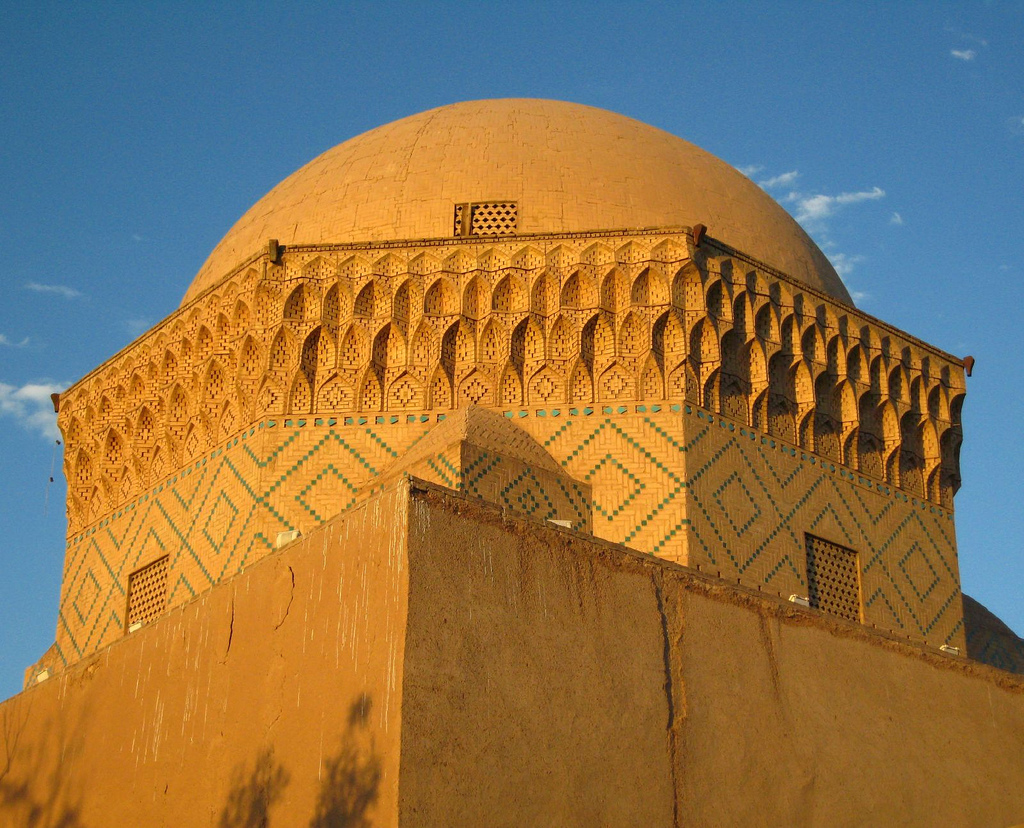In the center of Iran lies the desert city of Yazd; one of the most well-known and historically-rich cities of the country. Due to its geographical position, Yazd is home to unique vernacular architecture.
Books have been written about the history, culture, and tourist attractions of this ancient city; from the etymology of its name to the local arts and crafts, more specifically Termeh – traditional brocades. While this article may never do the city justice, we have compiled a short list of attractions for the travel buff to visit.
Jameh Mosque of Yazd
Jameh Mosque of Yazd, also called the Friday Mosque, was completed in the 14th century and it is still in use today. The structure, built in the Azeri style of architecture, boasts the tallest minarets in the entire country.
The locals believe the mud and brick used in the construction of this mosque was brought from Karbala, Iraq – the one of the holiest cities for Shiite Muslims. As such, rose water is used to clean mosque. The obverse of the Iranian 200 rials banknote is adorned with a picture of the mosque.
Varahram Fire Temple
Yazd is the center of Zoroastrian culture -- an ancient Persian religion. Possibly the most famous Zoroastrian fire temple, the Varharam holds a special place amongst the followers of the faith. While the structure itself may seem very simplistic, the architecture is not the main attraction; the fire burning within is. The fire burning inside the Varharam Fire Temple, contained within a goblet, is said to have been burning for more than 1500 years – predating the fire temple itself. The fire was first lit in the Nahid Fire Temple, situated in the southern Fars Province, before being moved to its current home.
Towers of Silence
Set upon two barren hilltops on the outskirts of Yazd are the Towers of Silence. Locally called ‘Dakhmeh’, these circular structures were used by Zoroastrians for exposure of the dead, to be scavenged by vultures, in accordance with their religious beliefs regarding the purity of the earth. While these structures have not been used since the 1960s, their history demands the attention of the avid traveler.
Meybod Icehouse
Located 50km to the North of Yazd is the town of Meybod, home to one of the country’s most famous icehouses. ‘An icehouse in a desert?’ you might wonder. Desert life drove the imaginations of Yazd residents, forcing them to come up with creative ways to conserve energy and save water. This huge mud and brick structure is the perfect example of a powerfully insulated structure to preserve the ice made in winter all throughout the scorching days of summer.
Water Museum
Antoine de Saint-Exupéry wrote in his book, ‘The Little Prince’, “What makes the desert beautiful is that somewhere it hides a well.” Indeed, those who live in the desert know the true value of water.
The Water Museum of Yazd is replete with tools and methods showcasing water delivery in this arid region, exhibiting the lengths the people of centuries past would go to persevere. It is also an excellent place to learn about the origins of Qanats, well-like vertical shafts designed for reliable delivery of water in the olden days.
Alexander’s Prison
Despite its name, Alexander’s Prison was a 15th-century domed school. Neither built nor used by Alexander the Great, the former school bears the unfortunate name due to a reference in a poem written by the Iranian poet Hafez. In the poem, Alexander imprisoned rebels in the building’s dungeon, which may refer to the octagonal pit below the courtyard.
Dolatabad Garden
Surrounded by UNESCO-listed gardens, this pavilion once housed Karim Khan Zand, the founder of the Zand Dynasty. The structure was built in the mid-18th century and contains the tallest wind catcher of Yazd – 22 meters.
In addition to the list above, the entire province of Yazd is home to a plethora of other historical structure. The province is a vast museum, and to truly appreciate its grand history one has to completely get lost in the narrow alleys of its cities and experience life as lived by those who inhabited the buildings centuries ago.



